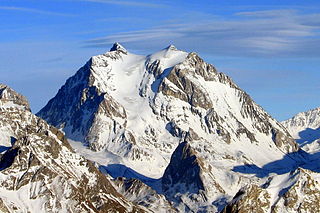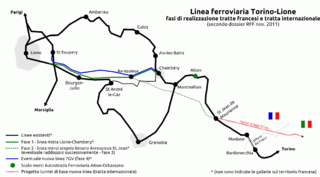
Giovanni Battista Piatti (Milan, February 10, 1812 - Milan, September 4, 1867) was an Italian civil engineer from Milan.

Giovanni Battista Piatti (Milan, February 10, 1812 - Milan, September 4, 1867) was an Italian civil engineer from Milan.
He invented a pneumatic rock-drilling machine that, with small modifications, was used in the Mont Cenis Tunnel. On 12 February 1853, he conceived how to carry out the excavation work, using compressed air, and published:
"Proposal for the railroad between Susa and Modane of a new system of propulsion with air compressed hydraulic motors (system experimented in England) and first draft of plan for excavation of the Alps".
He did not achieve fame during his life, since the invention was patented by Germain Sommeiller, but his work was recognized, especially by the architect Luca Beltrami, and admirers constructed a monument dedicated to him in Milan, at Largo La Foppa, remembering that:
"In February 1853 he was the first to propose for the Mont Cenis Tunnel original and practical applications of compressed air, [thus] distinguishing himself in that demanding enterprise".

The Cottian Alps are a mountain range in the southwestern part of the Alps. They form the border between France and Italy (Piedmont). The Fréjus Road Tunnel and Fréjus Rail Tunnel between Modane and Susa are important transportation arteries between France and Italy (Turin).

The Fell system was the first third-rail system for railways that were too steep to be worked by adhesion on the two running rails alone. It uses a raised centre rail between the two running rails to provide extra traction and braking, or braking alone. Trains are propelled by wheels or braked by shoes pressed horizontally onto the centre rail, as well as by the normal running wheels. Extra brake shoes are fitted to specially designed or adapted Fell locomotives and brake vans, and for traction the locomotive has an auxiliary engine powering horizontal wheels which clamp onto the third rail. The Fell system was developed in the 1860s and was soon superseded by various types of rack railway for new lines, but some Fell systems remained in use into the 1960s. The Snaefell Mountain Railway still uses the Fell system for (emergency) braking, but not for traction.

The Fréjus Rail Tunnel is a rail tunnel of 13.7 km (8.5 mi) length in the European Alps, carrying the Turin–Modane railway through Mont Cenis to an end-on connection with the Culoz–Modane railway and linking Bardonecchia in Italy to Modane in France. Its mean altitude is 1,123 m and it passes beneath the Pointe du Fréjus and the Col du Fréjus.

Mont Cenis is a massif and a pass in Savoie (France), which forms the limit between the Cottian and Graian Alps.

Germain Sommeiller was a civil engineer from Savoy. He directed the construction of the Fréjus Rail Tunnel between France and Italy, also known as the Mont Cenis Tunnel. This was the first of a series of major tunnels built in the late 19th century to connect northern and southern Europe through the Alps. Sommeiller pioneered the use of pneumatic drilling and dynamite to achieve record-breaking excavation speeds. This 12.8-km tunnel was completed on December 26, 1870, 11 years ahead of schedule. It remained the longest tunnel in the world until the opening of the Gotthard Rail Tunnel in 1882.

The Susa Valley is a valley in the Metropolitan City of Turin, Piedmont region of northern Italy, located between the Graian Alps in the north and the Cottian Alps in the south. It is one of the longest valleys of the Italian Alps. It extends over 50 kilometres (31 mi) in an east-west direction from the French border to the outskirts of Turin. The valley takes its name from the city of Susa which lies in the valley. The Dora Riparia river, a tributary of the Po, flows through the valley.

Bardonecchia is an Italian town and comune located in the Metropolitan City of Turin, in the Piedmont region, in the western part of Susa Valley. It grew out of a small village with the works for the Frejus Rail Tunnel, the first crossing the Alps.

Maurienne is one of the provinces of Savoy, corresponding to the arrondissement of Saint-Jean-de-Maurienne in France. It is also the original name of the capital of the province, now Saint-Jean-de-Maurienne.

Modane is a commune in the Savoie department in the Auvergne-Rhône-Alpes region in southeastern France.

The Turin–Modane railway is the international rail connection from Turin, Italy to Modane, France. It passes through the Susa Valley and the Fréjus Rail Tunnel. Together with the French Culoz–Modane railway it is often called "Fréjus Railway" or "Mont Cenis Railway".

The Mont d'Ambin Base Tunnel, also known as the Mont Cenis Base Tunnel, is the largest engineering work of the Lyon–Turin rail link project. Once completed, it will facilitate the principal high speed rail link between Italy and France, conveying both high speed passenger trains and rail freight between the two countries. At 57.5 kilometres (35.7 mi), that tunnel will be the longest rail tunnel in the world, ahead of the 57.1 km Gotthard Base Tunnel. It represents one third of the estimated overall cost of the project and is the only part of the line where work has started.

The Culoz–Modane railway is a 135 kilometres long railway running from Culoz, near Chambéry, through Saint-Jean-de-Maurienne to Modane in France. Together with the Italian Turin–Modane railway it is often called "Fréjus Railway" or "Mont Cenis Railway".

The Mont Cenis Pass Railway operated from 1868 to 1871 during the construction of the Fréjus Rail Tunnel through the Alps between southeast France and northwest Italy. It was designed by John Barraclough Fell and his three-rail design was used on some other mountain railways. The railway was 77 kilometres long, with a gauge of 1,100 mm and a maximum inclination of 9 per cent. It was used to transport English mail to India as part of the 1,400-mile (2,300 km) All Red Route.

The Saint-Michel-de-Maurienne derailment of 12 December 1917 was a railway accident involving a troop train carrying at least 1,000 French soldiers on their way home for leave from the Italian Front in World War I. A derailment as the train descended the Maurienne valley on the Culoz–Modane railway caused a catastrophic crash and subsequent fire in which more than 675 died. It is still France's deadliest rail accident to date.

The Turin–Lyon high-speed railway is a rail line under construction between the cities of Turin and Lyon. It is intended to link the Italian and French high-speed rail networks and will be 270 km (170 mi)-long. The core of the project is the Mont d'Ambin Base Tunnel which will cross the Alps between the Susa Valley in Piedmont and Maurienne in Savoie. At 57.5 kilometres (35.7 mi), that tunnel will be the longest rail tunnel in the world, ahead of the 57.1 km Gotthard Base Tunnel. It represents one third of the estimated overall cost of the project and is the only part of the line where work has started. The estimated cost of the line is €25 billion, of which €8 billion is for the base tunnel.
The Alpine rolling highway is a combined transport service, in the form of a rolling highway on special wagons traveling a distance of 175 km between France and Italy by the Mont Cenis Tunnel.
The Victor Emmanuel Railway (VER) was created on 25 May 1853 by decree of Victor Emmanuel II, King of Sardinia. After 1865 it took the name of Società per le Strade Ferrate Calabro-Sicule (SFCS). In 1867, the Savoy part of the system was transferred to the PLM. Between 1871 and 1873 the Italian part was incorporated into the Società per le Strade Ferrate Meridionali.

The Mont Cenis was an international express train linking Lyon in France with Milan in Italy. The train was named after the mountain range through which it crossed, inside the Fréjus Rail Tunnel on the French-Italian border.

Giovanni Battista Niccolini was an Italian poet and playwright of the Italian unification movement or Risorgimento.

Giovanni Battista Arnaud was a well renowned Italian painter of frescoes. He mastered as well, the chiaroscuro technique. His work can be found in many churches, palaces and public buildings in different regions of the north of Italy. As well in some churches of France and England. He is also recognized as a great portraitist.